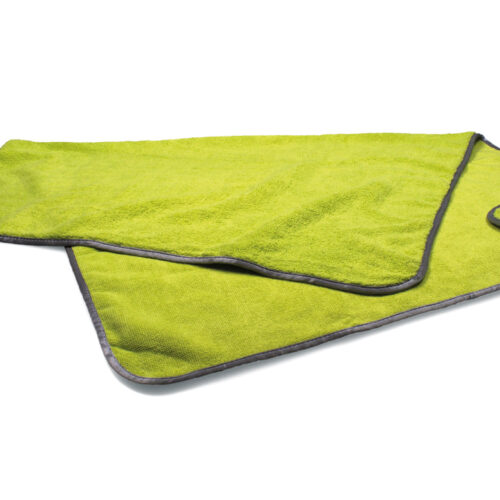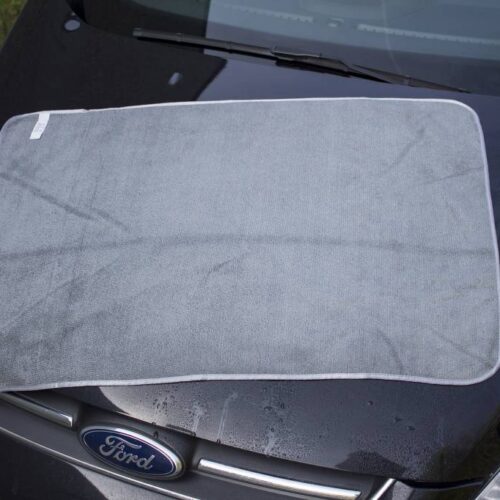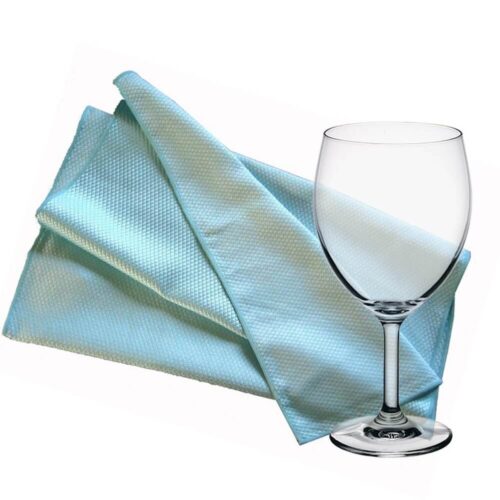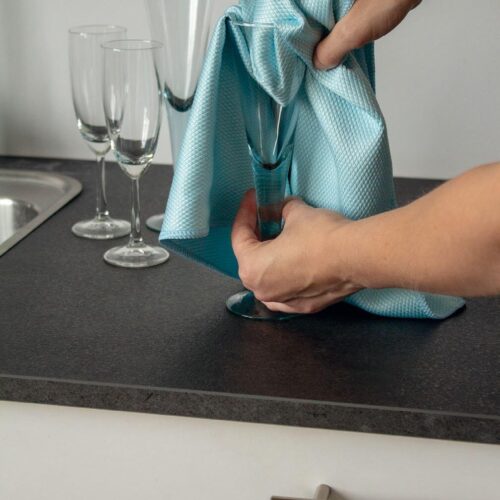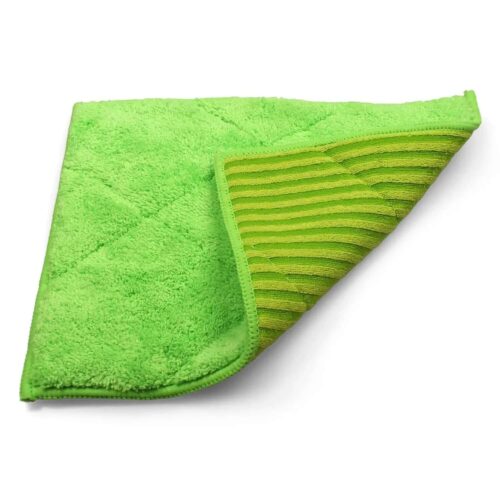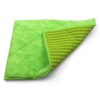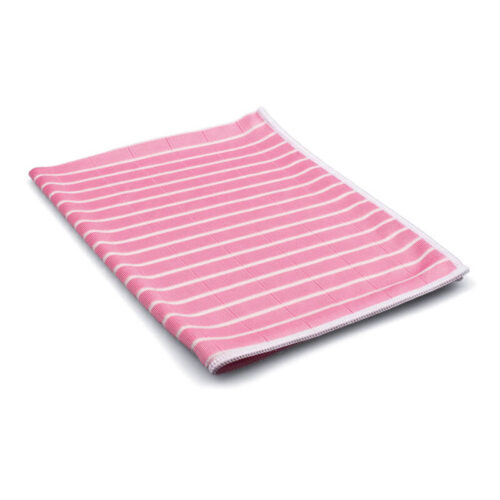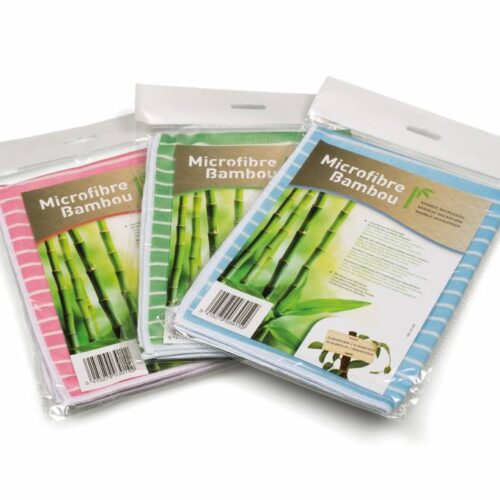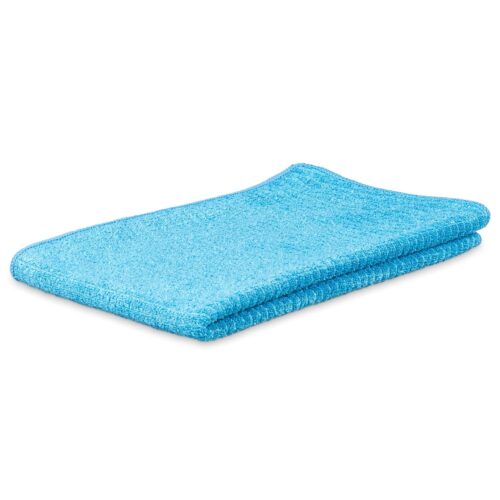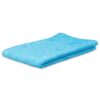The result of cleaning depends on the quality of the selected tools. It is important that the cloth used is absorbent, soft and at the same time does not cause lint. All the mentioned conditions are met, for example, by a microfiber cloth, which most people have certainly held and used at least once, but it still needs a little introduction.
Key Takeaways
- Microfiber cloths are incredibly versatile. They excel at cleaning various surfaces, including glass, stainless steel, and even delicate electronics.
- Their unique design makes them more effective. The small fibers and split design of microfiber cloths allow them to trap dirt and particles more successfully than traditional cotton cloths.
- Microfiber cloths can be a more sustainable choice. They often require less water and cleaning solution, and their durability means they last longer than traditional cleaning cloths.
Microfiber – What Does It Mean?
Microfiber cloths has not been on the market for more than a few decades, but has repeatedly proven its functionality during this time. Microfiber means a synthetic thread split using a special technology, resulting in sharp triangular fibers. This feature makes it possible to bind dust and dirt well to the cloth. Unlike a regular cotton cloth, which consists of large fibers and often leaves their residues on the surface, cleaning with a microfiber cloth is completely free of fabric residues.
Clothes are produced specifically for different surfaces, and they are broadly divided into two types – smoother ones, which are good for glass and other surfaces where fibers should not stick, and softer ones, which resemble the surface of a terry towel. The last one is well suited for wiping dust from various surfaces because they strongly grab small particles to their fibers.
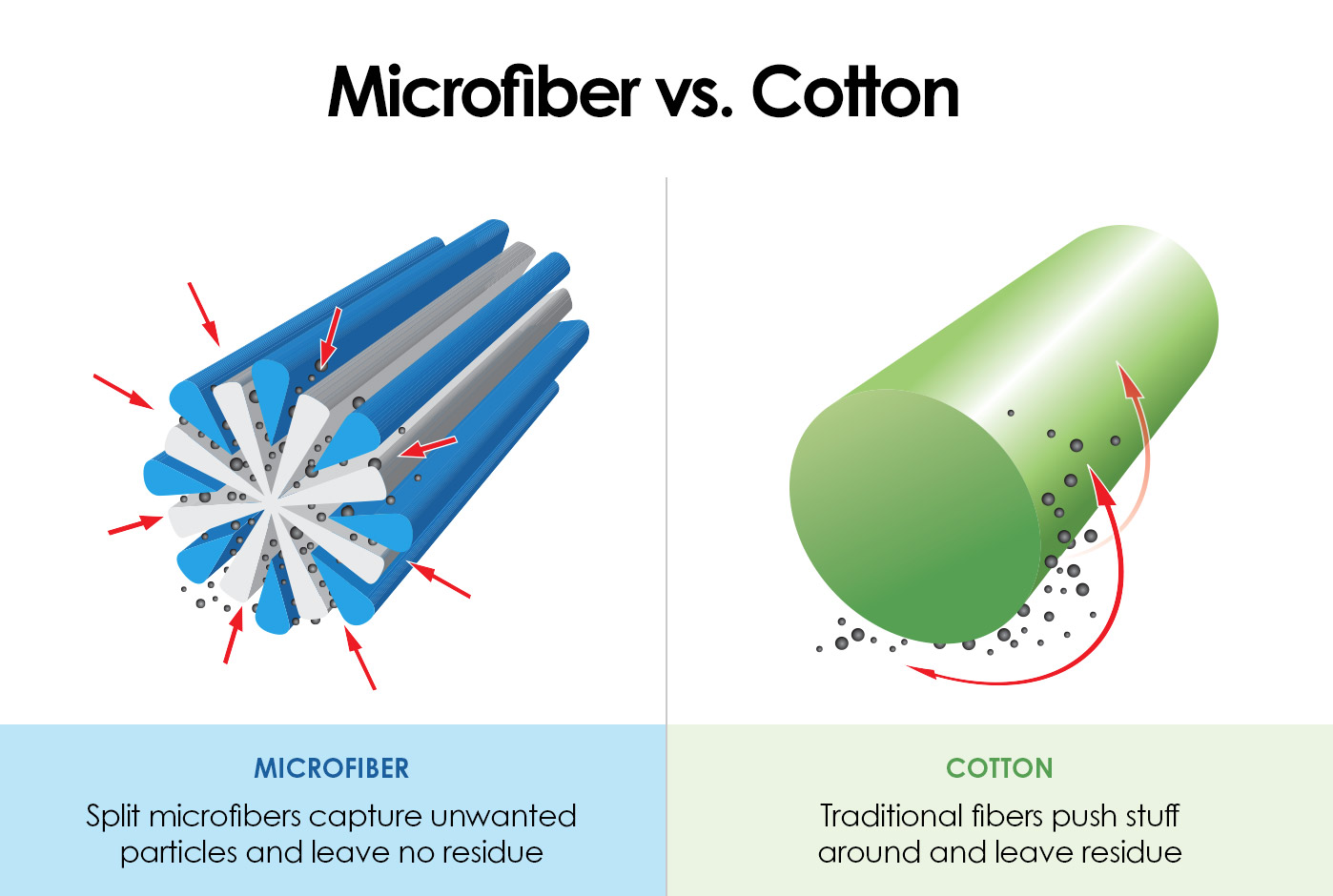
Only Water is Enough
However, when standing at the cleaning products shelf, it is better to leave the chemical products there, because only a microfiber cloth and water are completely sufficient. Most of the cleaning agents available in stores contain particles that reach nature through the sewers with the flushing water, and disturb the balance there. On the one hand, the prices of well-functioning tools are too expensive, but on the other hand, they are also harmful to health, and using the wrong tool on the wrong surface can damage both the furniture and the surface.
A microfiber cloth removes lighter dirt very well even without cleaning agents, and household chemicals are only needed for stronger dirt that has dried. A lightly moistened microfiber cloth is indispensable on surfaces that do not tolerate wetness, and a good result can also be obtained by cleaning glass surfaces only with a cloth moistened with water.
Key Factors to Consider When Choosing Microfiber Cloth
When choosing a microfiber cloth, several factors come into play to ensure you select the most suitable option for your cleaning needs. Let’s examine these factors in detail:
1. Fiber Quality and Composition
The quality and composition of the microfiber fibers significantly impact their performance. Look for cloths made from high-quality synthetic fibers, such as polyester and polyamide. These materials offer excellent absorbency and durability, ensuring your cloth will stand the test of time.
2. Density and Thickness
The density and thickness of the microfiber cloth determine its cleaning efficiency. Opt for a cloth with a high GSM (grams per square meter) count, as this indicates a denser and more effective cloth. Thicker microfiber cloths provide better absorption and particle retention, ensuring a thorough clean.
3. Size and Texture
Consider the size and texture of the microfiber cloth based on the surfaces you intend to clean. For larger areas, a larger cloth will be more efficient, while a smaller cloth can be ideal for tight spaces. Additionally, choose a cloth with a soft and non-abrasive texture to prevent any potential scratches or damage to delicate surfaces.
4. Color-Coding System
Implementing a color-coding system with your microfiber cloths can help prevent cross-contamination and ensure hygienic cleaning practices. Assign different colors to specific areas or tasks, such as blue for glass cleaning and green for kitchen surfaces. This practice promotes a more organized and effective cleaning routine.
How to Use a Microfiber Cloth Effectively?
In order for the microfiber cleaning cloth to last a long time and its best properties can come to the fore, it is important to use the cloth correctly. Here are some tips to keep in mind when using a microfiber cloth:
1. Microfiber cloth does not directly need a cleaning agent, but thanks to its small and dense fibers, it can also do the job with just water. Therefore, its use is suitable for allergy sufferers. But this cloth is never really wet. If you make it wet, the gap between the fibers will fill with water and the cloth will no longer pick up dirt. When using a cleaning agent, always wet the surface to be cleaned with it, not the cloth itself.
2. The dust cloth could be quite dry or evenly moist, then the cleaning result will be the best. You can make the cloth slightly damp, for example, by splashing water on the cloth or dabbing water evenly on the cloth with your hand. A damp, clean microfiber cloth will also pick up microbial dirt with a little more friction.
3. The microfiber cloth is used folded, preferably in 4. It provides up to 8 different cleaning surfaces per use. When they are all blackened, the cloth is washed clean and used again. If you don’t fold the cloth, you can only use two surfaces of the cloth, i.e. one side and the other side. The 40×40 cm clothes we sell can be folded as many as 3 times, thus creating roughly 16 cleaning surfaces per cloth.
4. You can clean the glass surface most effectively if you first clean the surface with a damp cloth and then go over it again with a microfiber glass cleaning cloth. By acting in this way, it is certain that there will be no annoying drops or streaks left on the glass.
5. The microfiber cloth is washed in a laundry bag and preferably with a detergent that does not contain bleach or fabric softeners. Chlorine should definitely be avoided and washed separately from cotton.
6. Create a color system with rags. Often, clothes are available in different colors and designed for different surfaces or rooms. In this way, it is easy for you to distribute them according to the tone between different rooms of the home, and different clothes are used for the surfaces of the toilet and kitchen.
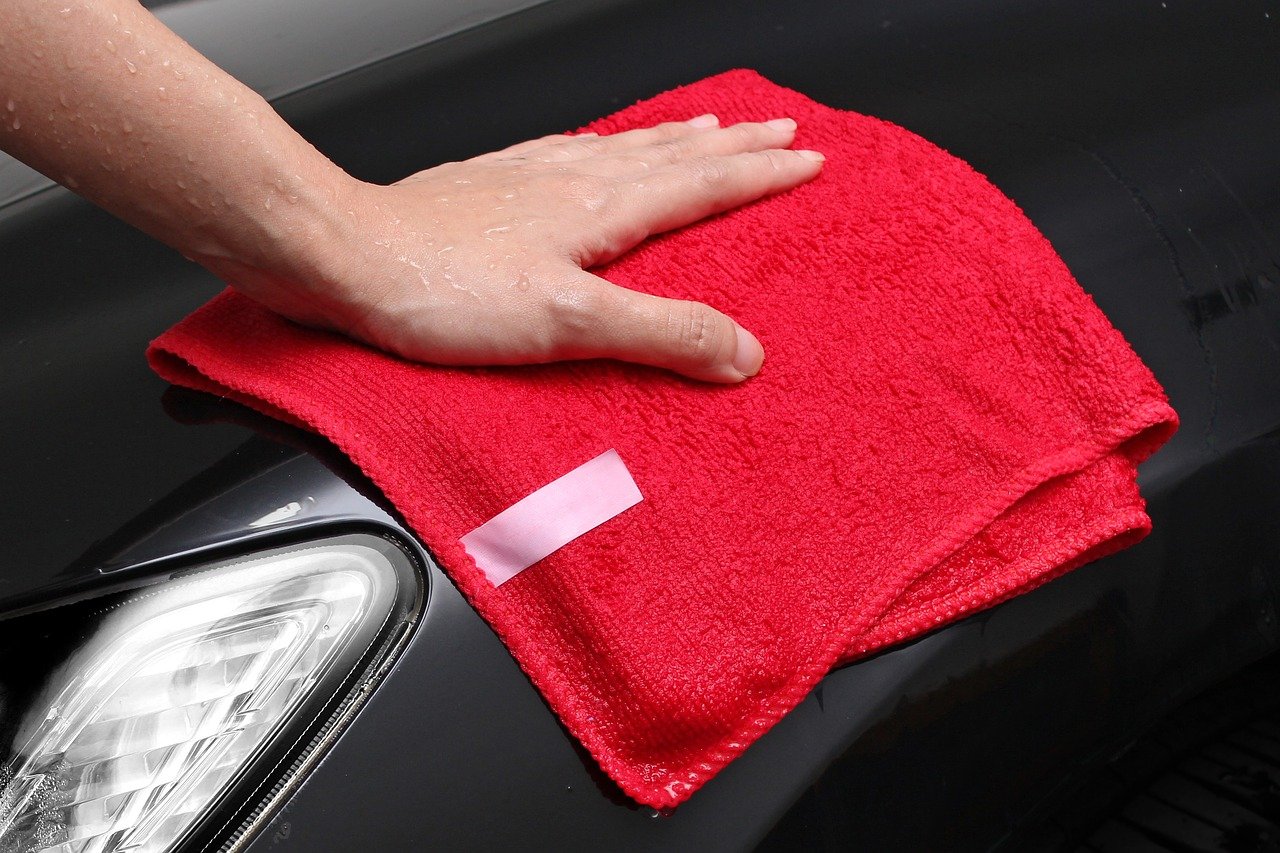
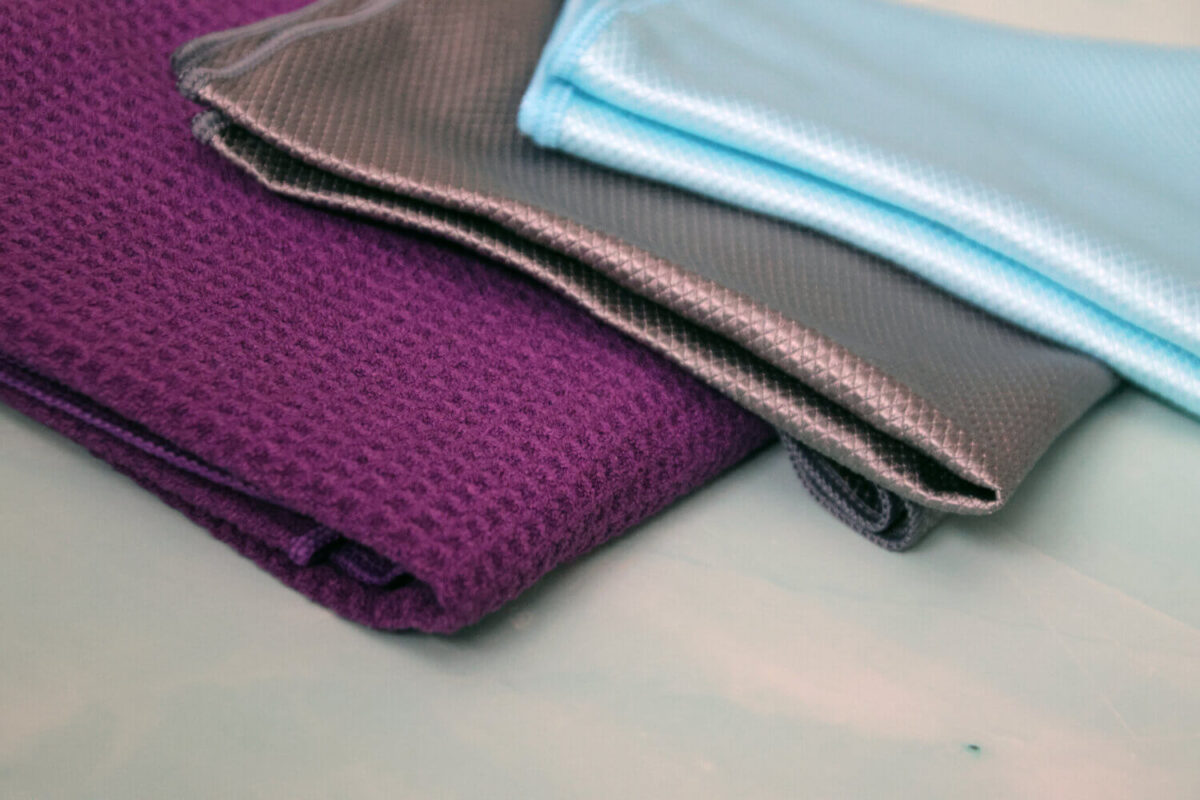
Microfiber is Suitable For Most Surfaces
One of the main charms of a microfiber cloth is its versatility. Although it is mostly used for household cleaning, it is actually suitable for the maintenance of many other surfaces due to its softness and dirt-binding properties. For example, it is very convenient to clean the car interior, apply care products and polish, clean work surfaces and stainless surfaces, wash and clean floors with a microfiber cloth.
Thanks to its high absorbency, the larger microfiber drying towel Luxus can be conveniently used to dry larger surfaces such as the car body. Also, a microfiber cloth is an excellent aid in the care of clothes and shoes. When used in the right combination with GoGoNano cleaning agent and brush, you will achieve a beautiful result with simple effort.
Durability
Microfiber cleaning clothes are extremely durable and nature-saving aids. Microfiber clothes mainly consist of a mixture of two nylons, and this is the secret of their durability. Since they are reusable and do not require special maintenance, the amount of energy required for their maintenance is relatively small. Microfiber clothes can withstand up to 500 washes and thus save a lot of time and money. Microfibers are so small and effective that they can also successfully remove bacteria and microorganisms. However, they do not have such a strong effect against viruses, because the virus is too small compared to the fibers of the cloth.
Why Are Microfiber Clothes Still Gaining Popularity?
These clothes are suitable for cleaning almost any hard surface. Starting with the floor, countertops and bathroom, ending with boots and baby strollers. Microfiber clothes are durable, effective and easy to use. The reason why their correct use is still gaining popularity lies in the success of large household chemical products businesses. It is not in their interest to promote a product that requires nothing but clean water to clean. However, the rise of microfiber products may be boosted by a wave of eco-friendly thinking.
In summary, it can be said that microfiber clothes are as innovative and environmentally friendly solution as nanotechnology is. If you skillfully put them to work together, a clean and high-quality result is guaranteed. Use microfiber towels instead of regular cotton clothes and replace widespread household chemicals with nanotechnological cleaning and care products. In this way, you will get a really durable cleaning arsenal with which you can quickly clean both the home and the car.
FAQ: Microfiber Cloth for All Surfaces
What is a microfiber cloth and why is it effective for cleaning?
A microfiber cloth is made from synthetic threads split into sharp triangular fibers, making it highly effective at binding dust and dirt. It’s more efficient than regular cotton cloths as it leaves no fabric residues and is suitable for a variety of surfaces.
Can I use microfiber cloths without chemicals?
Yes, one of the key benefits of microfiber cloths is their effectiveness with just water, making them a great option for those who prefer chemical-free cleaning. They are particularly useful for lighter dirt and can reduce the need for household chemicals.
What should I consider when choosing a microfiber cloth?
When selecting a microfiber cloth, consider the fiber quality, density, size, and texture. High-quality synthetic fibers like polyester and polyamide are recommended. Also, consider using a color-coding system to prevent cross-contamination.
How do I use a microfiber cloth effectively?
For effective use, slightly dampen the cloth for most cleaning tasks. It’s important not to over-wet it as this can reduce its effectiveness. The cloth should be used folded to maximize cleaning surfaces.
What are the common uses of microfiber cloths?
Microfiber cloths are versatile and can be used for dusting, cleaning glass and stainless steel, scrubbing bathrooms, wiping down kitchen counters, and cleaning car interiors and exteriors. They are a suitable replacement for paper towels in many cleaning tasks.
Are microfiber cloths suitable for allergy sufferers?
Yes, due to their ability to clean effectively with just water, microfiber cloths are an excellent choice for allergy sufferers. They don’t require the use of harsh chemicals, which can often trigger allergies.
